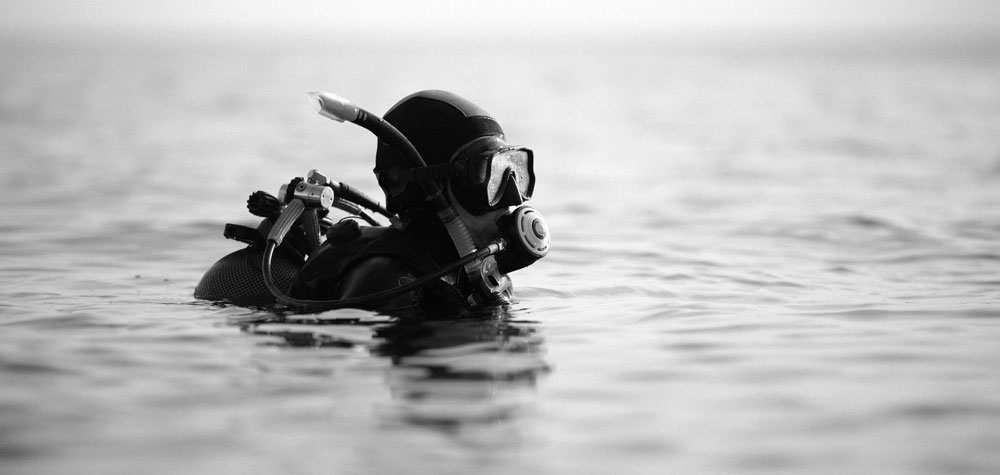by Mawer Investment Management, via The Art of Boring Blog
We were 100 feet underwater off the coast of Honduras when I realized something was off. Fifty yards ahead, the bow of a giant ship lay on its side; its stern stood tilted, but upright. The Odyssey—a 300-foot freighter that had split in two when it sank 15 years ago—loomed in the blue waters before us. We were swimming towards the bow when I noticed three divers ascending overhead. That’s unusual, I thought. We had only been underwater for 20 minutes. Why were they surfacing now? Later, when we arrived at the surface we learned why. Nelson had run out of air.
Above water, Nelson seemed calm. He explained that when they reached the stern of the ship he noticed that he was already low on air. Realizing he needed to get to the surface soon, he signaled his dive buddy that they had to ascend. They only made it to 60 feet below surface before Nelson’s tank was completely out. Following protocol, Nelson began to draw air from his dive buddy’s tank using his alternate regulator. Soon they were joined by a divemaster who also assisted in their ascent. Within a matter of minutes the three divers made it safely and calmly to surface. A dicey situation with the potential for disaster instead resulted in a textbook procedure because Nelson had trained for this moment.
In investing, there is a tendency to focus on the process and theory of risk management. A good process, based on sound principles, can eliminate unnecessary exposure to risk. Yet process and theory are not the only ways we should think about how we manage investment risk. If there was one insight from my dive trip in Honduras, it was that experience counts for a lot in life, and practice is our closest approximation to real life experience that we can get. Therefore, as investors, we should also consider how we might acquire—through practice—the skill of responding well to different environments.
Yes, Nelson survived the Odyssey dive because he followed a well-established protocol designed to be effective in exactly that kind of situation. However, Nelson was only able to follow that process because he didn’t freak out when he ran out of air. At some point 60 feet under the water, Nelson inhaled into his regulator and got nothing. Having experienced this sensation myself in training, I can say that it is unnerving. But Nelson had practiced his reaction to this very scenario and was able to calmly go through the motions he had rehearsed as part of his PADI certification.
This wasn’t just following process: this was Nelson executing a skill. Had Nelson simply read about it in advance it’s doubtful he would have executed the steps as well as he did.
Given the abstract nature of risk in investment management, it is easy for investors to forget that they need to build this skill, too. Yes, it is important to have checklists, spreadsheets and processes to help you observe and manage risks. But the actual process of risk management does not happen in a vacuum. Investors must sometimes make decisions during times of heightened emotions in the market. Sometimes decisions must be made when everyone is panicking; other times, when everyone is full of hubris and overconfidence. Effective decision-making relies not only on understanding what the best course of action should be in a scenario, but being able to see the scenario clearly, which relies on one’s nerves being steady. Risk management ultimately comes down to judgment under pressure.
This leads us to an important observation. While divers rehearse in advance of diving, investors don’t really have this luxury. How can an investor replicate what it feels like to be out of air?
Unfortunately, the answer is not straightforward. It is obviously invaluable for an investor to experience what it feels like to go through the ups and downs of a cycle, yet it takes years to acquire this experience. To some extent, it isn’t possible to circumvent the element of time—there is no weekend crash course that can give you decades of real time experience.
That being said, there are ways to speed up the learning curve. One of the most effective strategies we’ve found is also one of the most traditional: apprenticeship. How can you teach someone what it feels like to go through a cycle? Have them work closely with someone who has a great deal of experience investing through cycles. Make them work together, such that they are constantly sharing opinions, stories and lessons with one another. We have found this goes a very long way in the development of judgment. You can look at a number of our current fund managers today and see the benefit of past mentorships. Paul Moroz, for example, worked closely with both Jim Hall and Martin Ferguson before taking on a fund of his own. When Dave Ragan says “a rolling loan gathers no loss,” he stole that line from his original mentor, Gerald Cooper-Key, who was the fourth person to join Mawer in the 1980s.
But why learn from one person when we can learn from many? One of the flaws in the traditional apprenticeship framework is that you are only learning from one person. Moreover, the relationship is hierarchical and typically flows one way. But when you have twenty people on an investment team, why not have everyone learn from everyone? Collective mentorship can be even more powerful than traditional apprenticeship.
That is why our team focuses so much on group learning. In fact, it is so important that we organize a significant amount of our structure, resources and culture around it. For example, we have deliberately fostered a culture in which individuals feel safe to openly discuss ideas and share mistakes and wins. Hierarchy is eschewed and our organizational structure is flat. We meet weekly as an entire team to share lessons with one another. At least once a year, we host a post mortem on the investment decisions of the previous twelve months and share our mistakes. Moreover, individual compensation is tied to how well he or she is advancing the processes and thinking on our team. These are just a handful of examples of how we attempt to create a collective mentorship.
There is an adage that good judgment comes from experience which comes from bad judgment. Often, nothing really compares to the experiences you get in real life. However, that doesn’t mean that you can’t prepare to the best of your abilities for what is to come. It can be extremely fruitful to rehearse in conditions similar to what you will eventually face. Although this is not easy to do when it comes to investing, it is nevertheless possible (to an extent). We just need to be willing to learn from as many peers and colleagues as possible.
The post Out of Air appeared first on The Art of Boring.
This post was originally published at Mawer Investment Management














